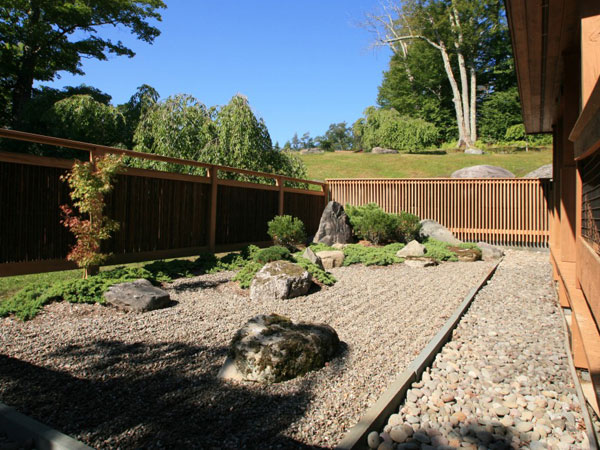Hashi in motion
A secondary concept of Ma is hashi. Generally, hashi means “edge.” The origin of this pronunciation of hashi comes from the Japanese word hashike, meaning a boat, or a barge. Therefore, saying the word hashi unconsciously carries an image of a boat moving between two borders.
In this example, the boundary exists in the form of a boat, so it is always moving. If you are on the boat, you moving with this boundary, similar to how you would move with the currents when under water.
This same pronunciation of hashi can take other meanings as well—which are coincidentally all architectural elements. These four meanings, discussed in the video above, are represented by the Chinese characters for periphery, bridge, veranda, and stairs.
The Itsukushima Shrine
The Itsukushima Shrine in Hiroshima is a great example of how these five meanings of hashi can manifest in Japanese architecture.
First, the shrine is located on an island across from the city, so you must take a boat to visit. You will then approach the torii gate. Although it marks the territory of the shrine, it is also an open boundary: you could technically enter from any direction.

The periphery of the shrine is partially enclosed by open, cloister-like corridors. Because these boundaries are transparent, you can see the architecture inside of the corridors as well as beyond them. This partial transparency is a kind of architectural trick you can play to create a boundary in motion.

The veranda of the shrine opens to the water. When you stand on it, you can experience how this boundary is not only separating the inside and the outside, but also connecting them.

The bridge within the shrine connects the sphere of gods and spirits with the sphere of humans.

Within the main building of the shrine is a raised stage on which performances dedicated to gods and spirits take place. The stage is more sacred than the platform it is on. The few steps to this stage are creating the boundary in motion.

This article is based on Yoko Kawai’s talk, “Designing Mindfulness: Spatial Concepts in Traditional Japanese Architecture,” at the Japan Society in New York in May, 2018.


